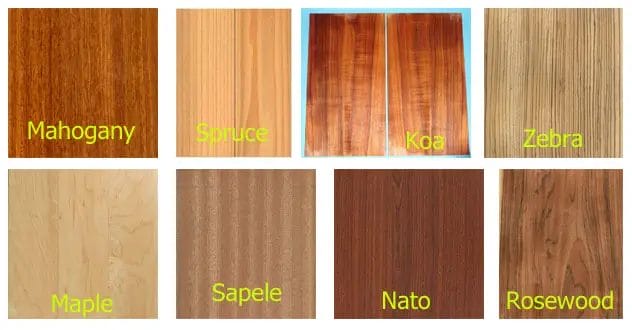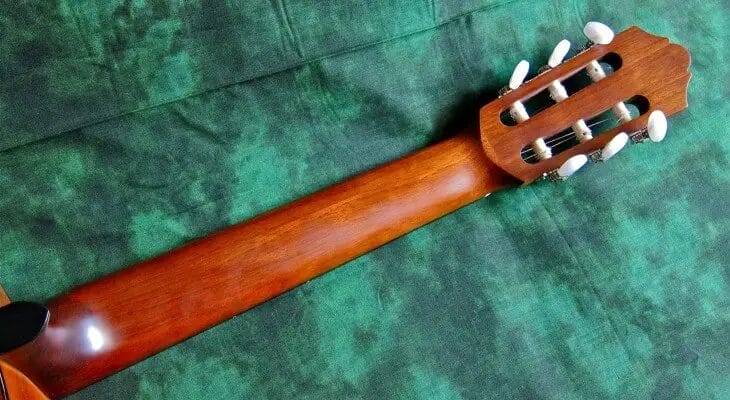NATO wood refers to the wood that is approved and certified by the North Atlantic Treaty Organization (NATO) for military use. It is known for its durability, strength, and resistance to harsh environments. NATO wood is commonly used in military construction projects, such as building temporary structures, bridges, and defensive barriers. Its quality and reliability make it a preferred choice for military operations and tactical deployments around the world.

Characteristics and Properties of NATO Wood
NATO Wood, also known as North Atlantic Treaty Organization Wood, is a type of timber that is commonly used by NATO member countries for construction and other purposes. It is known for its durability, strength, and versatility, making it an ideal choice for various applications.

Below are some of the key characteristics and properties of NATO Wood:
1. Strength and Durability
NATO Wood is highly regarded for its exceptional strength and durability. It has the ability to withstand heavy loads and resist damage, making it suitable for structural applications such as building frames, bridges, and utility poles. Its strength also contributes to its long lifespan, ensuring that structures made from NATO Wood can withstand the test of time.
2. Resistance to Decay and Insects
NATO Wood possesses natural resistance to decay and insect infestation. This characteristic is attributed to the wood’s natural oils and resins, which act as a protective barrier against fungal growth and pests. As a result, structures built with NATO Wood require minimal maintenance and are less susceptible to damage caused by moisture and insects.
3. Versatility
One of the notable features of NATO Wood is its versatility. It can be easily shaped, cut, and joined, making it suitable for a wide range of applications. NATO Wood can be used for construction purposes, including flooring, decking, roofing, and cladding. It is also commonly used for furniture, cabinetry, and crafting due to its natural beauty and workability.
4. Environmental Sustainability
NATO Wood is considered to be an environmentally sustainable choice. It is sourced from responsibly managed forests, ensuring the preservation of natural habitats and biodiversity. The production of NATO Wood involves sustainable logging practices, reforestation efforts, and adherence to strict forestry regulations. Choosing NATO Wood helps to support the conservation of forests and reduces the negative impact on the environment.
5. Attractive Appearance
NATO Wood is known for its attractive appearance and natural beauty. It has distinct grain patterns and colors, ranging from light to dark tones. This aesthetic appeal makes NATO Wood a popular choice for interior and exterior applications, adding warmth and character to any space.
6. Fire Resistance
NATO Wood exhibits good fire resistance properties. It has a high ignition point and burns slowly, making it a safer option compared to other building materials. This characteristic is particularly important for structures where fire safety is a top priority.
7. Thermal Insulation
NATO Wood provides excellent thermal insulation properties. It has low thermal conductivity, which helps in maintaining comfortable indoor temperatures and reducing energy consumption. This makes NATO Wood an energy-efficient choice for buildings.
In summary, NATO Wood possesses exceptional strength, durability, and versatility. Its resistance to decay and insects, along with its attractive appearance, make it a popular choice for various construction and design applications. Furthermore, its sustainability and fire resistance properties contribute to its overall appeal. Whether it is for structural purposes or adding aesthetic value, NATO Wood stands as a reliable and sustainable option in the construction industry.

Applications and Uses of NATO Wood in Construction
NATO wood, also known as North Atlantic Treaty Organization wood, is a type of wood that has gained popularity in the construction industry due to its unique characteristics and sustainability. This type of wood is obtained from forests that are managed in accordance with the guidelines set by NATO, ensuring responsible and environmentally-friendly practices.
There are several applications and uses of NATO wood in construction, making it a versatile and reliable choice for builders and architects. Let’s explore some of the key areas where NATO wood excels:
1. Structural Components:
NATO wood is widely used for structural components in buildings, such as beams, columns, and trusses. Its high strength-to-weight ratio makes it ideal for supporting heavy loads while maintaining structural integrity. The consistent quality of NATO wood ensures longevity and durability in various construction projects.
2. Flooring and Decking:
Due to its durability and resistance to wear and tear, NATO wood is commonly used for flooring and decking applications. Whether it’s for residential or commercial buildings, NATO wood provides a natural and aesthetically pleasing finish that enhances the overall appearance of the space.
3. Cladding and Siding:
NATO wood is an excellent choice for cladding and siding due to its weather-resistant properties. It can withstand harsh climatic conditions and protect the underlying structure from moisture, UV rays, and other external factors. The natural beauty and grain patterns of NATO wood also add a touch of elegance to any building facade.
4. Interior Finishes:
From wall paneling to furniture, NATO wood is widely used for interior finishes in both residential and commercial spaces. Its warm and inviting appearance enhances the ambiance of the room, creating a comfortable and visually appealing environment. NATO wood can be easily stained, painted, or varnished to achieve the desired look and style.
5. Landscaping and Outdoor Structures:
NATO wood is often used in landscaping projects and for constructing outdoor structures such as pergolas, gazebos, and fences. Its natural resistance to decay and insects makes it an ideal choice for outdoor applications where durability is essential. NATO wood’s organic and earthy feel blends seamlessly with nature, creating a harmonious outdoor living space.
6. Sustainable Building Practices:
One of the major advantages of NATO wood is its sustainability. The responsible forest management practices followed by NATO ensure the conservation of natural resources and the protection of biodiversity. By using NATO wood in construction, builders contribute to a more sustainable and eco-friendly building industry.
In summary, NATO wood offers a wide range of applications and uses in construction. Its strength, durability, and aesthetic appeal make it a versatile choice for structural components, flooring, cladding, interior finishes, landscaping, and outdoor structures. Additionally, the sustainable practices associated with NATO wood contribute to a greener and more environmentally-conscious construction industry.

Benefits and Advantages of Using NATO Wood
NATO Wood, also known as North Atlantic Treaty Organization Wood, is a unique type of lumber that offers a wide range of benefits and advantages compared to traditional wood materials. Whether you are a builder, contractor, or homeowner, incorporating NATO Wood into your construction projects can bring numerous advantages. Let’s explore some of the key benefits of using NATO Wood:
Durability
NATO Wood is renowned for its exceptional durability. It is specially treated to withstand harsh weather conditions, including extreme temperatures, moisture, and UV exposure. This makes it ideal for outdoor applications such as decking, fencing, and siding. The durability of NATO Wood ensures that your structures will last longer and require less maintenance over time.
Resistance to Decay and Insects
One of the major advantages of NATO Wood is its natural resistance to decay and insects. The lumber is treated with preservatives that make it highly resistant to fungi, termites, and other wood-boring insects. This inherent resistance reduces the risk of structural damage and extends the lifespan of NATO Wood products.
Environmental Sustainability
NATO Wood is sourced from sustainably managed forests. The organization ensures that the wood is harvested responsibly, minimizing the impact on the environment. By using NATO Wood, you can contribute to the preservation of forests and support sustainable practices in the construction industry.
Cost-Effectiveness
Despite its numerous benefits, NATO Wood is cost-effective compared to other alternative materials. The availability and widespread use of NATO Wood make it an affordable option for various construction projects. Additionally, its durability and resistance to decay and insects reduce the need for frequent maintenance and replacement, resulting in long-term cost savings.
Versatility
NATO Wood is available in a wide range of sizes, grades, and finishes, making it highly versatile for different applications. From structural framing to interior finishes, NATO Wood can be used in various construction projects. Its versatility allows builders and architects to explore creative design options while ensuring structural integrity.
Fire Resistance
NATO Wood is treated with fire-retardant chemicals, which significantly improves its resistance to fire. This makes it a safer choice for buildings and structures, reducing the risk of fire-related damage. Using NATO Wood in construction projects can provide an extra layer of protection and peace of mind.
Easy Installation
Another advantage of NATO Wood is its ease of installation. The standardized sizes and dimensions of NATO Wood products make them easy to work with and fit together seamlessly. This can save time and labor costs during the construction process.
Enhanced Aesthetic Appeal
NATO Wood’s natural beauty and warm aesthetics add value and visual appeal to any construction project. Whether used for decking, flooring, or interior finishes, NATO Wood enhances the overall aesthetic of a space. Its timeless charm and elegance make it a popular choice among homeowners and designers alike.
In summary, NATO Wood offers a range of benefits and advantages that make it a superior choice for construction projects. Its durability, resistance to decay and insects, environmental sustainability, cost-effectiveness, versatility, fire resistance, easy installation, and enhanced aesthetic appeal set it apart from traditional wood materials. By incorporating NATO Wood into your projects, you can enjoy long-lasting and visually appealing structures while contributing to a sustainable future.
Comparing NATO Wood with Other Types of Wood
When it comes to woodworking projects, the choice of wood plays a significant role in determining the final outcome. One type of wood that has gained popularity in recent years is NATO Wood. But how does it compare to other types of wood? Let’s take a closer look.
Durability
NATO Wood is known for its exceptional durability. It is a dense hardwood that can withstand heavy use and resist wear and tear. This makes it an excellent choice for furniture, flooring, and outdoor projects. In comparison, softwoods like pine or cedar may not be as durable and may require more maintenance over time.
Strength
When it comes to strength, NATO Wood stands out. It is highly resistant to warping, bending, and cracking, making it ideal for structural applications. Other types of wood, especially softwoods, may not possess the same level of strength and may require additional support or reinforcement.
Appearance
NATO Wood boasts a beautiful, rich appearance that adds elegance to any project. Its dark brown color and fine grain make it a popular choice among woodworkers and designers. Softwoods, on the other hand, may have a lighter color and coarser grain, which may not offer the same level of sophistication.
Workability
One advantage of NATO Wood is its workability. It can be easily cut, shaped, and joined using standard woodworking tools and techniques. This makes it a favorite among both professional woodworkers and DIY enthusiasts. Softwoods, although easier to work with, may not offer the same level of precision or stability.
Cost
When it comes to cost, NATO Wood tends to be on the higher end of the spectrum compared to other types of wood. Its durability, strength, and unique characteristics contribute to its higher price tag. Softwoods, on the other hand, are generally more affordable but may not offer the same level of longevity or versatility.
Sustainability
NATO Wood comes from sustainably managed forests, ensuring its long-term availability. It has been certified by reputable organizations, indicating its commitment to environmental responsibility. Softwoods, while abundant, may not always come from sustainable sources, making NATO Wood a more eco-friendly option.
In summary, NATO Wood offers exceptional durability, strength, and a beautiful appearance that adds elegance to any project. While it may be pricier compared to other types of wood, its workability, sustainability, and long-term value make it a worthwhile investment. Whether you’re working on furniture, flooring, or outdoor projects, NATO Wood is a reliable choice that will stand the test of time.
Frequently Asked Questions (FAQs)
What is NATO wood?
NATO wood, also known as North Atlantic Treaty Organization (NATO) Stock Number 7030, is a type of wood used in military applications. It is a standardized wood material that meets specific requirements for military equipment and packaging. NATO wood is often used for shipping crates, pallets, and other logistical purposes within the military.
What are the characteristics of NATO wood?
NATO wood must meet certain specifications to be classified as such. It is typically a hardwood, such as oak or beech, and must be free of knots, cracks, and other defects. It is treated to prevent fungal and insect infestation, and it is usually painted or stained for better durability and visibility.
Where can I find NATO wood?
NATO wood is typically supplied by authorized suppliers or vendors that cater to military or defense organizations. These suppliers adhere to the specific requirements and standards set by NATO for the production and distribution of NATO wood. If you are in need of NATO wood, it is advisable to contact authorized suppliers or consult with military procurement agencies.
Conclusion:
In conclusion, NATO wood is a popular and durable type of plywood that is widely used in various construction and woodworking projects. Its high-quality composition, consisting of multiple layers of thin wood veneers, provides excellent stability and strength. Whether it’s for building furniture, cabinets, or even flooring, NATO wood offers reliable performance and resistance to warping or cracking. Its versatility and affordability make it a preferred choice for both professional builders and DIY enthusiasts. By utilizing NATO wood, you can ensure the longevity and durability of your projects, while also enjoying the natural beauty of wood.
